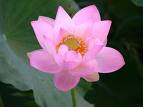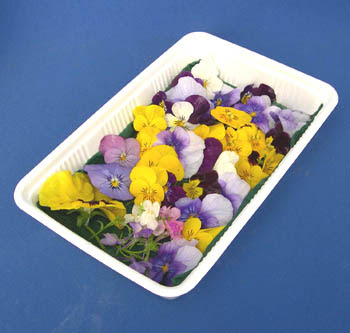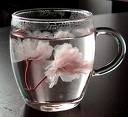:::::::::::::::::::::::::::::::::::::::::::::::::::::::::::::::::::::::::::::::::::::::::::::::::::::
SUMMARY
Please use your browser to find a keyword.
::::::::::::::::::::::::::::::::::::::::::::::::::::::::::::::::::::::::::::::::::::::::::::::::::::
GENERAL INFORMATION ... In our Washoku BLOG
GENERAL INFORMATION ... In our Washoku BLOG
Aemono ... Japanese dressing
Ameyoko あめよこ (アメ横)Cheap shopping alley, from Ueno to Okachimachi
..... Reference: Kappabashi for plastic food
Anecdotes about Japanese Food
Asagohan, asameshi ... Japanese Breakfast
Asaichi, Morning Market (asa ichi, asa-ichi 日本三大朝市) Morgenmarkt
Bamboo, as food or tool in daily life
Bento and Ekiben Lunchpakete und O-Bento am Bahnhof
Bizenyaki, Pottery from Bizen
Bunraku and Joruri 文楽.浄瑠璃 and wasabi
Chanoko, 茶の子 Snack served with tea (cha no ko, o-cha no ko)
Cherry Blossom Time ... some Food Kigo
Chinmi, special delicasies
Chuka Ryori, chuuka ryoori 中華料理 Chinese Food
Chinatown 中華街 in Yokohama, Kobe and Nagasaki
conbini コンビニ / コンビニエンスストア convenience store Combini
Daidokoro 台所 (だいどころ) Japanese Kitchen
Daietto ダイエット Diet and fasting ... the extreme : Sokushinbutsu 即身仏
daigomi 醍醐味 "taste of Daigo" ghee butter
Dango 団子 Dumplings of all kinds
... Tsukimi and MORE dango ...
Danshi Gohan 男子ごはん, 太一×ケンタロウ men are cooking !
. . . bentoo danshi 弁当男子 lunchbox men
Daruma and Food ... LINKS
Dengaku 田楽 dance and food
Donburi 丼 Bowl of rice with topping
Ecotarian Food エコタリアン Slow food, スローフード
Edo no Shokubunka 江戸の食文化 Food Culture of Edo, LINK list
Edo-Vegetables (Edo yasai 江戸伝統野菜)
Edo wazurai 江戸患い "the Illness of Edo"
Ekiben 駅弁 Station Lunch Boxes ABC-Index, Lunchpaket vom Bahnhof
Expo, exhibitions, food fairs and more food news
Famine in spring (shunkyuu) Famine in Japanese History. kikin 飢饉
Fast Food Gourmet ... the Japanese Versionshominha gurume 庶民派グルメ
Food safety in Japan
Fucha ryori, fucha ryoori 普茶料理 Chinese monk quisine of the Obaku sect of Zen
funaryoori 船料理 (ふなりょうり) food served on board a ship or boat
Furikake and Ochazuke ... toppings for a bowl of rice 振り掛け, お茶漬け
Gangu 郷土玩具 Folk Toys
manjuu kui ningyo 饅頭食い人形 doll eating a manju bun
Geemu ゲーム Games and Food yasai karuta 野菜かるた and more
Gyuunyuu 牛乳 and so 蘇(そ) milk products of the Asuka period
Hakubutsukan, 食文化博物館 Food Museums and Theme Parks
Hanbaiki 販売機 vending maschines for food
Hanga and Nihonga ... 版画 / 日本画 Japanese Food in Art
Hara hachibu ... eating only 80% of your capacity an Okinawan diet
History of Japanese Food
Hocho, wabocho . 和包丁. Knife, knives (hoochoo, waboochoo)
Hooroku 焙烙 / 炮烙 / ホーロク / ほうろくearhten roasting pot and Hooroku Jizo ほうろく地蔵 and a kyogen play, 炮烙割り "smashing pots"
Horegusuri ほれぐすり(惚れ薬, 惚薬) love potion
Italian Food (itarian ryoori イタリアン料理)made in Japan
Juken fuuzu 受験フーズ Juken Food for the Examination Hell
Kagurazaka 神楽坂 restaurant district in Tokyo
Kaiseki Ryori, kaiseki ryoori 懐石料理
Kappoo ryoori 割烹料理 Kappo food, a simpler style of Kaiseki Food
Kayu 粥 rice gruel with many kigo
Kazari ... Decoration of table and food 食卓の飾り
kenkoo shokuhin 健康食品 health food Supplements, Macrobiotics
Kitaoji Rosanjin (北大路魯山人) ... and the Japanese Vessels for Food, Utsuwa
Konchu Ryori, konchuu ryoori 昆虫料理 Insects as food
Kusuri
Medicine Day (kusuri no hi)Chinese Medicine as food for your health !
Kyoyasai, kyooyasai 京野菜 vegetables from Kyoto
Kyuushoku 給食 School Lunch Schulspeisung, Schulessen
Language, Japanese and Food
Mandala Food Arrangements (hoshamori, hooshamori 放射盛り)
Manga, Anime and Japanese Food Culture
料理漫画. 料理アニメ. グルメ漫画
Mashiko Pottery, Folk Craft Mashikoyaki, mingei
Matsuri, Festival Food
Menrui ... all kinds of noodles 麺類
Meoto Tableware for Couples
Rice bowls : meotojawan 夫婦茶碗 , chopsticks : meotobashi 夫婦箸, tea cups : meotoguinomi 夫婦ぐい呑み , meoto yunomi 夫婦湯のみ
Modoki ryoori もどき料理 "imitation food" vegetarian dishes. ganmodoki
Mori no megumi Bountiful food from the Forest
Mukimono むきもの Vegetables cut to artistic figures
Nagasaki and the influence of European food
Noren 暖簾store curtains
omocha おもちゃ Cooking Toys
Oyatsu お八つ . o-cha-uke 御茶請け afternoon snack
Pan パン bread
toosuto トースト toast
Presents during all seasons
Recycle, Reuse, Re-use Wiederverwendung von Lebensmitteln
Restaurants and Tea stalls (ryooriten, ryokan, chaya, izakaya and more )
Robatayaki ... around the open hearth Kushiyaki, skewers
Sake no Hosomichi 酒のほそ道 "The Narrow Road of Ricewine"
Manga about food, with haiku, by ラズウェル細木 Rozwell Hosoki
Sashimi, Raw Food raw fish, wild boar, horse, pheasant ...
Satoyama 里山 さとやま Local Mountain Region Ecology
seibo, o-seibo, oseiboo 歳暮, o-chugen, ochuugen 中元
Presents during all seasons
Senbei, sembei 煎餅 (せんべい) rice crackers, sweet and salty
shika senbei tobashi, throwing deer senbei, kigo
Settai, O-Settai ... Giving Alms to Henro Pilgrims SETTAI : Henro Pilgrims Culture in Shikoku
Shiro 城 Castle Burgen. and related food items
Shogayaki, ginger roast dishes
Shokuyoo no hana 食用の花 Edible blossoms, edible flowers
Shojin Ryori (shoojin ryoori) 精進料理Vegetarian Temple Food
including
Fucha Ryori (fucha ryoori 普茶料理)
Shopping in Japan Shopping for food
SHUN 旬の物 / 旬の味 Specialities of the Season
Shusse uo 出世魚 "career fish" fish changing the name as they grow
Soups of Japan, an overview
Sushi 寿司
Tera ... Temple Festivals and Food
Terminology used for Japanese Cooking
Tobeyaki, Tobe pottery
Tools used for Cooking
Tsukemono and how to make them ... 漬物
Tsukiji, the big fish market in Tokyo 築地市場, Tsukiji shijoo
Tsumami, o-tsumami, otsumami 御摘みSnacks with alcohol. Horsd’œuvre.
Umi no sachi, yama no sachi ...
Bountiful food from the sea, bountiful food from the mountains
The Origin.
Waseda Kankyo Juku 早稲田環境塾 Waseda School of Environment
Washoku Sahoo 和食作法 Table manners
Japanese Table Manner 和食作法 Ishimura Kanae 石邨可奈江, Okayama. Grace Finishing School グレースフィニッシングスクール.
Water (nomimizu) Drinking Water of Japan
Western vegetables used in Japan
Whisky, whiskey, uisukii ウイスキー
online reference
Burbon, Whiskey-Soda
Wrapping Paper Art / Food Art
Yakuzen, yaku-zen 薬膳 ( やくぜん) "Eating Medicine" medicinal food dishes and Traditional Chinese Medicine (TCM)
Kanpo, Chinese Medicine as food (kanpo 漢方薬)
kenkoo ryoori 健康料理 food for your health
yakuzen ryoori 薬膳料理 food with medicinal propertirs
yakusoo ryoori 薬草料理 food with medicinal herbs
yakujiki (やくじき)
kusudama 薬玉 クスダマ food with yomogi mugwort Beifuss
Speisen mit Heilkräutern, Medizin-Essen
Speisen als Medizin
Yookai (youkai, yokai) 妖怪 Japanese monsters and food
Zen, Tray, Dinner tray, box tray (hako zen) ...
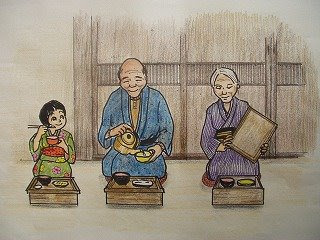
Family eating from food trays
:::::::::::::::::::::::::::::::::::::::::::::::::::::::::::::::::::::::::::::::::::::::::::::::::::::
::::::::::::::::::::::::::::::::::::::::::::::::::::::::::::::::::::::::::::::::::::::::::::::::::::
INGREDIENTS . ZUTATEN
zairyoo 材料

Raw materials, spices and seasonings are listed here.
Some come with extra lists for details.
A lot of the ingredients are also KIGO.
Please check the World Kigo Database for their details.
:::::::::::::::::::::::::::::::::::::::::::::::::::::::::::::::::::::::::::::::::::::::::::::::::::::
aamondo, アーモンド almonds
abura 油 all kinds of oil, öl
goma abura ごま油 seseme oil, Sesamöl
oriibu abura オリーブ油 olive oil
piinattsu abura ピーナッツ油 peanut oil
roofatto oiru ローファットオイル low fat oil
sarada abura サラダ油 salad oil
tenpura abura 天婦羅油 tempura oil
tsubaki abura, see below
Azuki 小豆 adzuki beans, many other dried beans are used.
daizu 大豆 soy bean
sasage mame ささげ(大角豆) soy bean variety
Baniku
Horse meat, baniku (ばにく/ 馬肉) basashi, sakuranabe
BUTA ... Pig and Pork (buta, ton 豚 ぶた) Schwein
Chikuwa ちくわ(竹輪) "bamboo ring" grilled fish saussage
Chirimen jako ちりめんじゃこ、ちりめんざこ(縮魚) semi-dried very small sardines
kigo for spring
choomiryoo 調味料 flavoring, seasoning
awase choomiryoo あわせ調味料 mixing seasonings
Daikon 大根 big radish Rettich
In the Zen sect, daikon also represents Shakyamuni Buddha.
Dashi ... soup stock
Edo-Vegetables (Edo yasai 江戸伝統野菜)
Fu, Wheat gluten (fu 麩) and FU products. fu-croutons
Fu ふ (麩) breadlike pieces of dried wheat gluten
Furikake and Ochazuke ... toppings for a bowl of rice 振り掛け, お茶漬け
Gobo, goboo 牛蒡 Burdock root
Goma 胡麻 sesame, seeds or goma abura ゴマ油 oil
shirogoma,white seeds. kurogoma, black seeds.
surigoma, crushed. kirigoma, cracked.
nerigoma, paste.
gomashio, gomasio, with salt.
mukigoma, hulled
gomadare, goma dipping sauce
Sesame (til, tila, gingili) India goma, goma no hana (Japan)
Gyoza no kawa, gyooza 餃子の皮 gyoza dumpling wrappers
haabu ハーブ herbs, Gewürzkräuter
Hamaguri, clam shells, venus clams Venusmuscheln
Hanpen はんぺん (hanpei 半平/hanpen 半片) fluffy fish cake made of ground fish
Ichiyaboshi いちやぼし (【一夜干(し)) "dried for one night" air-dried fish
Iriko いり‐こ(熬り子) dried sardines, niboshi 煮干し
Jidori 地鳥 (じどり) Local Chicken types
Kaiso Sea Vegetables 海草Edible seaweeds, LIST
Kamaboko かまぼこ (蒲鉾) fish cake, fish paste
Fischwurst; Fischpastete
Kanbutsu 乾物 kambutsu dried food items Getrocknete Lebensmittel
Kani 蟹料理 CRAB dishes
Kankitsu, kankitsurui かんきつ(るい)(柑橘(類)citrus fruit
mikan, ponkan, hassaku, sudachi, daidai, kabosu, iyokan, sudachi, yuzu, oranges and others
Kanpyo かんぴょう(干瓢/乾瓢) dried gourd ribbons
Kanten 寒天 gelatine (mostly from agar agar)
Karashi からし(芥子/辛子) Japanese mustard, often in powder form to prepare fresh for use
Karee カレー Japanese curry preparations
Katakuriko, Starch 片栗粉. potato starch. Stärkemehl
Katsuobushi, dried bonito shavings 鰹節 , dried bonito flakes
Ken, tsuma and karami, garnish with Sashimi
ken けん, tsuma つま, and karami 辛み, 辛味, 辛み.
Keshi no mi 芥子の実 white poppy seeds
Kikuimo, 菊芋 Heliantus tuberosus. Jerusalem artichoke
Topinambur. Erdbirne
Kinako 黄粉 "yellow powder", toasted soy bean flower
Sojabohnenmehl
Kinoko, take きのこ(茸/蕈/菌) mushrooms LIST
Kiriboshi daikon きりぼし大根 shredded radish, also other shredded items are used
Ko 粉 kona flower
Konbu 昆布 kombu kelp seaweed
Seaweed (kaisoo 海草) as kigo
Konchu Ryori, konchuu ryoori 昆虫料理 Insects as food
Konyaku, konnyaku こんにゃく(蒟蒻/菎蒻)
sometimes braid-cut pieces
..... shirataki "white waterfall" konnyaku noodles, konnyaku
..... aka konnyaku, red konnyaku, red with iron residues
Kudamono, fruit ... LIST
Kuri no kanro-ni 栗の甘露煮 chestnuts in syrup
Kanro-Ni, sweet simmering
Kurumi くるみ (胡桃) walnuts Walnuss
Walnut (kurumi) as kigo
Kyooyasai, kyoyasai, kyosai 京野菜 / 京菜 Vegetables from Kyoto.
Gemüse aus Kyoto, Kyoto-Gemüse
Masu and Ayu : Trouts and sweetfish ... the naming Forellenarten
Matsu no mi まつのみ (松の実) pine nuts, often used for Chinese cooking
Menrui ... all kinds of noodles 麺類 Nudeln
Mi 実 Berries and Nuts from the forest Nuesse und Beeren
Mirin みりん 味醂 ミリン ... sweet cooking ricewine, syrup rice wine
Miso paste 味噌
Mitsuba 三つ葉 (みつば) "Three leaves" honewort
Mochi ricecakes, 餅 (もち) rice cakes
Moyashi 萌やし、糵, もやし bean sprouts of various types
..... kaiware かいわれ, supurauto スプラウト sprouts, often daikon radish, for garnishing
Bohnensprossen
Myoga Ginger (myooga) 茗荷 (みょうが). Zingi-Ingwer
japanischer Ingwer
nagaimo, naga-imo ながいも(長芋)yam, Chinese yam
http://www.jetro.org/trends/food_ingredients_nagaimo.php
Naganegi 葱 (ねぎ) leek, green onions
Nasu 茄子 (なす), nasubi なすび eggplant, aubergine
Natto, nattoo 納豆 fermented soy beans
Niku 肉 にく all kinds of meat from four-legged animals
Nori 海苔 dried laver, as sheets or chopped. Meerlattich
... ao-nori, green nori, iwa nori from the rocks, yaki-nori toasted, ajitsuke-nori with flavor
Oboro and Denbu ... shredded meat, fish or vegetables おぼろ (朧) / 田麩
Pan パン Bread
..... koppepan コッペパン spindle-shaped small bread, sometimes with a cut in the top to add some other food items. Often sweet.
. . . CLICK here for Photos !
anpan アンパン, meronpan メロンパン melon bread, and many more
tsukudani toast 佃煮トースト
Panko パン粉 bread crumbs, often used as coating before deep-frying food
Rice お米 o-kome
:::::::::::::::::::::::::::::::::::::::::::::::::::::::::::::::::::::::::::::::::::::::::::::::::::::
Sakana ... 魚 FISH of all kinds
Sake 酒 ricewine, rice wine Reiswein
..... amazake, 甘酒 sweet white rice wine,
..... amakuchi, 甘口 sweet
..... karakuchi, 辛口 dry
Rice wine (ricewine) sake, Japan Reiswein as KIGO
Sansai 山菜 Mountain vegetables
Sansho, Sanshoo, Japanese pepper, "Mountain pepper"
Satoo 砂糖 sugar
..... kurosato "black" sugar from Okinawa, brown sugar
..... mizuame, mizu ame 水飴, syrup, made from barley or other grains
..... wasanbon 和三盆 Japanese sugar from Shikoku
Satsumaimo, satsuma imo 薩摩薯(さつまいも)sweet potatoes
Süßkartoffel
shidashiya 仕出し屋 catering, delivery service
Shiitake 椎茸 shiitake mushrooms
Shiitake Mushrooms as KIGO
Shio ... Salt 塩 Salz
Shirasuboshi しらす‐ぼし (白子干し/白子乾し) blanched very small sardines
kigo for spring
Shiso, beefsteak plant, Perilla 紫蘇
Shooga, Ginger 生姜
Shoyu, Soy Sauce shooyu 醤油
SHUN 旬の物 / 旬の味 Specialities of the Season
Shungiku, garland chrysanthemum 春菊
Soomen, somen noodles 索麺
Su 酢 , komezu, komesu 米酢 rice vinegar
:::::::::::::::::::::::::::::::::::::::::::::::::::::::::::::::::::::::::::::::::::::::::::::::::::::
Tamago 卵 (たまご) egg dishes
Tara 鱈 Cod fish
Tare タレ Sauces and dressings
Tofu, toofu, dofu, doofu 豆腐 Soy bean curd and its preparations
Togarashi, toogarashi 唐辛子 red hot pepper
Tonkatsu soosu 豚カツソース sauce for pork cutlet. fruity taste like a Worcestershire sauce
Tsubaki abura 椿油) camellia oil
Tsukemono and how to make them ... 漬物
Udo, Spikenard, Japanese spikenard 独活(うど)
Umeboshi 梅干 dried pickled plums
Umezu 梅酢 plum vinegar, liquid from the pickled plums
Uni 海胆 (うに) sea urchin and sea urchin roe (uni 雲丹)
Wagyuu, wagyu 和牛 Japanese beef
http://www.jetro.org/trends/food_ingredients_wagyu.php
Wasabi, Japanese horseradish わさび、山葵. Wasabia japonica
Wakame 若布 kelp
Seaweed (kaisoo 海草) as kigo
Yasai 野菜 やさい vegetables
Vegetables in the season, shun no yasai
Yakumi やくみ (薬味) spices and condiments
dokumi, kayaku
Yomogi よもぎ 蓬 mugwort
Beifuss, Beifuß
Yurine ゆり根 bulbs of lilies (lilly)
Lilienknollen. used for chinese medicine. grown in Hokkaido.
yurine manjuu 百合根饅頭
yurikonyurikon
Yuzu 柚子 ゆず citron, juice or peel is used
Yuzu as KIGO a ctiron fruit
..... Yuzu citron dishes for autumn Japan
:::::::::::::::::::::::::::::::::::::::::::::::::::::::::::::::::::::::::::::::::::::::::::::::::::
WASHOKU :
YASAI . Vegetable SAIJIKI
Seaweed (kaisoo 海草) as kigo
WASHOKU : INGREDIENTS tags
WASHOKU : INGREDIENTS
::::::::::::::::::::::::::::::::::::::::::::::::::::::::::::::::::::::::::::::::::::::::::::::::::::
:::::::::::::::::::::::::::::::::::::::::::::::::::::::::::::::::::::::::::::::::::::::::::::::::::
COOKING METHODS
The most important methods for preparing food are introduced here.
::::::::::::::::::::::::::::::::::::::::::::::::::::::::::::::::::::::::::::::::::::::::::::::::::::
aburadooshi あぶらどおし【油通し】 frying food quickly
usually before simmering or other cooking methods. Often done with Chinese cooking The outside gets a small membrane that will not let the taste leek out later. Usually done at 150 to 160 degrees centigrade.
aburanuki あぶらぬき【油抜き】 to drain off oil
after frying and deep-frying. Put it in hot water for a moment to drain of the oily taste.
aburu あぶる【焙る/炙る】 to per-heat
Both sides of a food are heatet for a moment over a grill or gas flames to get rid of excess moisture and warm the food. Nori get tasty after this treatment.
::::::::::::::::::::::::::::::::::::::::::::::::::::::::::::::::::::::::::::::::::::::::::::::::::::
Aemono あえ物、和え物 (あえもの) Japanese Dressing
... Namasu dressing 膾 , 鱠, なます
::::::::::::::::::::::::::::::::::::::::::::::::::::::::::::::::::::::::::::::::::::::::::::::::::::
Ageru 揚げる (あげる) frying, stir-frying
this word is also used for tenpura and furai (fried shrimp)
pfannenrühren
Kara-age and Tatsuta-age ... deep-frying 唐揚げ / 竜田揚げ
Kushiage, kushi-age 串揚げ deep-fried food pieces on bamboo sticks
agebitashi あげびたし【揚(げ)浸し】first frying and then marinating in flavored broth for some time.
With eggplants. Fish get softer bones when prepared like this.
agedama あげだま【揚(げ)玉】bits of fried batter
for example after cooking some tempura (tempura kasu, tenkasu 天かす)
in Kanto, these are put into udon soup )Tanuki udon.
Also put into miso soup.
agedashi あげだし【揚(げ)出し】deep fried food with a batter is placed in broth, some yakumi spices are added and shredded daikon radish, to sap off the oil.
Usually for Tofu (agedashidoofu) and eggplants (agedashi nasu 揚げだし茄子)
. . . CLICK here for eggplant Photos !
ageni, age-ni あげに【揚(げ)煮】 first frying, then simmering
Fish, meat or vegetables.
::::::::::::::::::::::::::::::::::::::::::::::::::::::::::::::::::::::::::::::::::::::::::::::::::::
Aku nuki, akunuki あくぬき (灰汁抜き) removing bitterness
the vegetables are often rubbed and rolled in a special liquid.
aku has an acrid, alkaline flavor.
Bitter chestnuts and acorns were treated in running water for days before eating.
Bamboo shoots need to be treated too, by boiling them with rice bran (komenuka).
Many ferns and other sansai mountain vegetables need to be treated.
rubbing with salt, shiomomi しおもみ(塩揉み)
aku tori, akutori アク取り take off the scum from boiling food
usually a flat spoon or sieve is used
. . . CLICK here for Photos !
:::::::::::::::::::::::::::::::::::::::::::::::::::::::::::::::::::::::::::::::::::::::::::::::::::::
amani あまに【甘煮】 "sweetly simmered"
Simmering food with extra lots of sugar. Especially kabocha, sweet potatoes and beans. People in Nagasaki use a lot of sugar in the food.
amiyaki あみやき【網焼き】 grilling, broiling
when the food is placed on a metal net or squeezed between two nets.
aomi あおみ "greenness"
to add green color for decoration.
for sashimi : aojiso perilla, spinach, cucumbers, cauliflower
for dressings (aemono) : rapeseed, shungiku chrysanthemum, spinach, cucumber, mitsuba, menegi leek
for nimono simmering : sayaendoo green beans, sayaingen, rapeseed, shungiku, mizuna, kinome tree buds
for soups : mitsuba, green leek, spinach, shungiku, mizuna, mibuna, kaiwarena.
::::::::::::::::::::::::::::::::::::::::::::::::::::::::::::::::::::::::::::::::::::::::::::::::::::
aramijin あらみじん / 粗みじん cut into rough small pieces
. . . CLICK here for Photos !
araregiri あられぎり / あられ切り cut to squares like arare pieces
especially for vegetables with a lenght of 4 to 5 cm.
ataru あたる grinding
The proper word would be suru する【擂る】for grinding, but this has a negative feeling to it (engi ga yokunai), so its opposite ataru あたる【当たる/中る】was choosen.
Im Mörser zerreiben
suribachi すりばち【擂り鉢/摺り鉢】 earthwear mortar
. . . CLICK here for Photos !
::::::::::::::::::::::::::::::::::::::::::::::::::::::::::::::::::::::::::::::::::::::::::::::::::::
Denbu and Oboro 田麩 / おぼろ (朧)... shredded food preparations
sakura denbu
Dengaku 田楽 dance and food
pieces on skewers with miso paste
:::::::::::::::::::::::::::::::::::::::::::::::::::::::::::::::::::::::::::::::::::::::::::::::::::::
Hitasu 浸す (ひたす)
soaking, steeping
Ohitashi お浸し o-hitashi 御浸し
:::::::::::::::::::::::::::::::::::::::::::::::::::::::::::::::::::::::::::::::::::::::::::::::::::::
iburi いぶり, ibusu 燻す to smoke, smoking, smoked food
kunsei 燻製 smoked food, often with cherry wood chips.
Iru いる (炒る /煎る) roasting, toasting
Kara iri からいり (乾煎り/ 空炒り), parching without using oil, dry-roasting
:::::::::::::::::::::::::::::::::::::::::::::::::::::::::::::::::::::::::::::::::::::::::::::::::::::
Kanro-Ni, kanroni 甘露煮 sweet simmering
for small fish or fruit
:::::::::::::::::::::::::::::::::::::::::::::::::::::::::::::::::::::::::::::::::::::::::::::::::::::
Kiru 切る cutting
Hocho, wabocho . 和包丁. Knife, knives (hoochoo, waboochoo) Japanisches Messer
katsuramuki かつらむき(桂剥き)cutting a continuous thin peel
kazaribocho, kazari boochoo 飾り包丁 decorative cutting and slashing
mentori 面取り cutting and leveling edges
rangiri 乱切り chopping into chunks
sengiri せんぎり(千切り) "one thousand cuts", shredding, cutting fine strips of cabbage, cutting carrots into juliennes
sogigiri そぎぎり (削ぎ切り) slant cutting, shaveing into slivers, for example the burdock roots
tazunagiri たづな切り(手綱切り) "cut like a horse bridle", braid cutting
often done with konnyaku pieces
toofu o kiru, dicing tofu in the hand
:::::::::::::::::::::::::::::::::::::::::::::::::::::::::::::::::::::::::::::::::::::::::::::::::::::
Kosu こす straining
strainer for miso, misokoshi みそこし (味噌漉し)
sarashi さらし, sarashinuno さらし布 thin cloth for straining food
:::::::::::::::::::::::::::::::::::::::::::::::::::::::::::::::::::::::::::::::::::::::::::::::::::::
Modosu もどす(戻す) rehydrating dried food, soaking dried food in water
::::::::::::::::::::::::::::::::::::::::::::::::::::::::::::::::::::::::::::::::::::::::::::::::::::
Musu むす (蒸す)steaming
dünsten, schmoren, in einer Pfanne, wenn die Lebensmittel Wasser ziehen
mushiki むしき (蒸し器) steamer
Dämpfer
mushiyaki ... 蒸し焼き steaming
dämpfen
This is a typical preparation for Chinese food items and some Japanese fish dishes.
CLICK here for PHOTOS !
jigoku mushi 地獄蒸し boiled in hot steam of a hot spring
Gokuraku Onkei 極楽温鶏 whole steamed chicken from Oita 極楽温鶏
in Dampf kochen
:::::::::::::::::::::::::::::::::::::::::::::::::::::::::::::::::::::::::::::::::::::::::::::::::::::
Niru 煮る simmering
nitsuke 煮付け simmering with soy sauce, sugar and mirin
CLICK here for PHOTOS !
Hokke no nitsuke ... and Prime Minister Aso some politics !
aoni あおに【青煮】"simmering while keeping the green color"
mostly with salt and thin soy sauce.
:::::::::::::::::::::::::::::::::::::::::::::::::::::::::::::::::::::::::::::::::::::::::::::::::::::
Onigiri おにぎり rice balls
Orosu おろす grating
grating radish, daikon oroshi だいこんおろし (大根卸し)
metal grater, oroshigane おろしがね (下ろし金/卸し金), comes in many shapes, some used directly at the table for wasabi etx.
samekawa oroshi-ki 鮫皮 下ろし器 grater for shakeskin
::::::::::::::::::::::::::::::::::::::::::::::::::::::::::::::::::::::::::::::::::::::::::::::::::::
Otoshibuta おとしぶた (落とし蓋) "dropped down lid", lid resting directly on the food in a pot or pan
to simmer, poach or braise food
The lid has to be a little bit smaller than the opening of the pot or pan.
:::::::::::::::::::::::::::::::::::::::::::::::::::::::::::::::::::::::::::::::::::::::::::::::::::::
Shiokara ... salty and pugnant pickles 塩辛
Shiozuke しおづけ(塩漬(け)) preserved in salt, pickled in salt
preserve fish in salt
Einsalzen, Einlegen in Salz (Fisch, Gemüse, Eier).
Pökeln (Fleisch und Wurstwaren)
quote
Einsalzen ist neben dem Trocknen eine der ältesten Methoden zur Konservierung von Lebensmitteln. Dabei wird durch das Salz die Feuchtigkeit in den Produkten für Mikroorganismen unbrauchbar. Um zuverlässig zu wirken, muss das Salz die Lebensmittel vollständig und gleichmäßig durchdringen. Dem Salz können auch trockene Gewürze zugegeben werden, um den Geschmack zu verbessern ...
Bei einigen Produkten, z.B. Weißkohl oder grünen Bohnen, tritt durch eine genau abgemessene Salzmenge Saft aus. Die darin enthaltenen Mikroorganismen bewirken eine langsame Fermentation, bei der Zucker in Säure verwandelt wird.
Pökeln
Dabei kommt außer dem Salz noch Salpeter zum Einsatz, der die bakterienhemmende Wirkung des Salzes verstärkt.
Pökeln mit Nitritpökelsalz
© More in the WIKIPEDIA !
Shogayaki ... Ginger Roast Meat 生姜焼き
:::::::::::::::::::::::::::::::::::::::::::::::::::::::::::::::::::::::::::::::::::::::::::::::::::
Suritsubusu すりつぶす(磨り潰す/擂り潰す) crushing, mashing, grinding
groved grating mortar, suribachi すりばち(擂り鉢/摺り鉢)
:::::::::::::::::::::::::::::::::::::::::::::::::::::::::::::::::::::::::::::::::::::::::::::::::::
Tare, タレ all kinds of sauces for dipping
amadare, あまだれ 甘タレ sweet dipping sauce
gomadare, ごまだれ(胡麻垂れ) seseme sauce
misodare みそだれ 味噌タレ miso sauce
shabushabu no tare しゃぶしゃぶのタレ comes with different kinds of sauces for dipping, some are the specialities of a restaurand kept for many generations.
. . . CLICK here for Photos !
shoogadare しょうがだれ ginger sauce
wasabidare, wasabijooyu (wasabi shoyu) わさびだれ、山葵醤油 soy sauce with Japanese horseradish
tataki たたき food chopped with a knife
aji no tataki アジのたたき chopped horse mackerel
:::::::::::::::::::::::::::::::::::::::::::::::::::::::::::::::::::::::::::::::::::::::::::::::::::::

tenpura てんぷら . 天婦羅 . 天麩羅 . 天ぷら Tenpura, Tempura
deep-fried battered food
many ingredients are deep-fried. Mostly fish and seafood and vegetables.
Even the new leaves of greet tea are made into tempura during the season 新茶の天婦羅.
© More in the WIKIPEDIA !
frittierter Fisch, frittiertes Gemüse
WASHOKU : Tenpura Tempura dishes
basu tenpura バス天ぷら tempura from black bass
ブラックバス天ぷら付のうどん
From Lake Biwa
:::::::::::::::::::::::::::::::::::::::::::::::::::::::::::::::::::::::::::::::::::::::::::::::::::::
WASHOKU
Tsukemono 漬物 Pickles
asazuke あさづけ【浅漬け】lightly pickled vegetables
Tsukimi, with an egg as "moon viewing" decoration
tsukudani つくだに (佃煮, つくだ煮) simmering in sweetened soy sauce
:::::::::::::::::::::::::::::::::::::::::::::::::::::::::::::::::::::::::::::::::::::::::::::::::::
Yahata-maki やはたまき (八幡巻き) goboo burdock roll
from Yahata village, Kyoto
:::::::::::::::::::::::::::::::::::::::::::::::::::::::::::::::::::::::::::::::::::::::::::::::::::
Yaku 焼く "burning, heating", baking, toasting, broiling, grilling, pan searing
this word is used for many preparations, sometimes using oil.
shichirin しちりん (七輪) small portable stove for grilling with charcoal
. . . CLICK here for Photos !
YAKU ...
Aburi-yaki, Horoku-yaki, Kara-yaki, Kimi-yaki, Miso-yaki, Namban-yaki, O-kariba-yaki, Shio-yaki, Teri-yaki and many more !
:::::::::::::::::::::::::::::::::::::::::::::::::::::::::::::::::::::::::::::::::::::::::::::::::::::
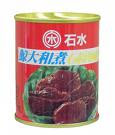
Yamatoni, Yamato-ni 大和煮 simmering meat of wild animals and birds in soy sauce, sugar and ginger
for whale meat, ginger and perilla leaves are cut finely and simmered too.
CLICK here for PHOTOS !
This method evolved in the Meiji period, when meat was eaten more frequently in Japan. A procucer of canned chicken meat, Maeda 前田道方 made it famous.
In 1915 the company Meijiya 明治屋 produced canned beef.
In 1923 Mitsukoshi in Nihonbashi had bargain sales of the canned meat. The Japanese army used this canned meat too.
hogei 捕鯨(ほげい) catching whales became popular and much whale meat was produced for canning, also sheep, horse and deer, even bears and sea lions. But all this meet has a strong animal tast and needs long hours of simmering.
See .. Kujira Ekiben from Tateyama, Chiba.
Yudoshi, yudooshi ゆどおし(湯通し) blanching in boiling water
:::::::::::::::::::::::::::::::::::::::::::::::::::::::::::::::::::::::::::::::::::::::::::::::::::
:::::::::::::::::::::::::::::::::::::::::::::::::::::::::::::::::::::::::::::::::::::::::::::::::::
These items are related to DARUMA SAN !

Akachochin CHOOCHIN, lanterns 提灯とだるま
Ame, dagashi <> Sweets 飴、駄菓子
Anko, sweet bean paste Daruma 餡子だるま , だるまあん
Bentoobako ― Lunchbox with Daruma Bentoobako 弁当箱
Bon, 盆 a tray
CHA 茶 The world of TEA and Daruma
Coasters
Cookies だるまクッキー
Daruma sweets
Cups and Mugs
..... Guinomi ぐい飲み Tea Cups
Cup soup <> カップラーメン Cup Ramen, Cup Raamen
Fukutoku Senbei <> Waffles for Good Luck from Kanazawa
福徳せんべい
Gokoku hojo .. 五穀豊穣 (gokoku hoojoo)
Prayers for a Bountiful Harvest of the Five Grains
Hamburger Cotelettes KATSU Daruma Food
..... 合格祈願エビカツバーガー to pass examinations
Hashi, O-Hashi ... Chopsticks お箸 おはし
Hashi oki ... chopstick rests 箸置き
Juken Food 受験フーズ Examination Hell Food, January 2007
Kabocha Daruma as Pumpkinかぼちゃ達磨, かぼちゃだるま
Kagome Food for Exam Students カゴメ
Kashigata 菓子型 <> Cake Molds from wood
..... Kashigata 菓子型 Cake mold from iron
..... Kashi bin 菓子ビン <> Glass for cookies
Maekake ... Apron 前掛け
Mito Kōmon .. 水戸黄門 Tokugawa Mitsukuni 徳川 光圀
Nabe ... だるま鍋 ... Cooking pot and restaurant
Natto 納豆 ... Fermented Beans
Noren ... Door Curtains 暖簾 のれん
Pan, Daruma pan だるまパン Daruma bread and
Daruma monaka だるまもなか Daruma wafers
Parfait Daruma ..... パフェだるま Food Art
RESTAURANTS . . . More . . . DARUMA Restaurants
Sable Cakes from Kawasaki 川崎大師名物 大人気 元祖ダルマサブレー
Salt and Pepper Shaker Shio Koshoo Ire . 塩コショウ入れ. 塩胡椒入れ
Sake, Ricewine and Daruma 酒.....
Sakazuki 杯 small cups / 達磨タンブラー . Tumbler Daruma
Sankuro, Dondo Yaki and Spring Fire Ceremonies 三九郎とだるま
(Sankuroo)
Sara - Plates お皿にだるま
Senbei だるませんべい Rice Crackers
Sencha 煎茶 <> Tea with Daruma see > CHA
Shamoji しゃもじ <> Rice Spoon, Ladle
Snacks with Daruma スナック Food
Soba 蕎麦 そば <> Daruma Eating Buckwheat Noodles
TABEMONO More about FOOD with Daruma
Tamago ... 卵だるま, たまごだるま, タマゴダルマEggs and Daruma
TEA and Daruma : Cha
The world of TEA and Daruma Introduction
Tokkuri ― Drinking Hot Sake with Daruma 徳利とだるま
Tsumayooji (tsumajoji) 爪楊枝 つまようじ <> Toothpicks-holder
Udon Noodles with Daruma 達磨にうどん ウドン
Vinegar Tasters, The three Vinegar Tasters of Chinese Art
Wasabi わさびだるま Japanese Horseradish called "Daruma"
Yunomi ― Drinking Tea with Daruma 湯のみとだるまさん/ Guinomi

source : Daruma Food LINKS
:::::::::::::::::::::::::::::::::::::::::::::::::::::::::::::::::::::::::::::::::::::::::::::::::::::
MORE
Genral Information Articles
:::::::::::::::::::::::::::::::::::::::::::::::::::::::::::::::::::::::::::::::::::::::::::::::::::::
